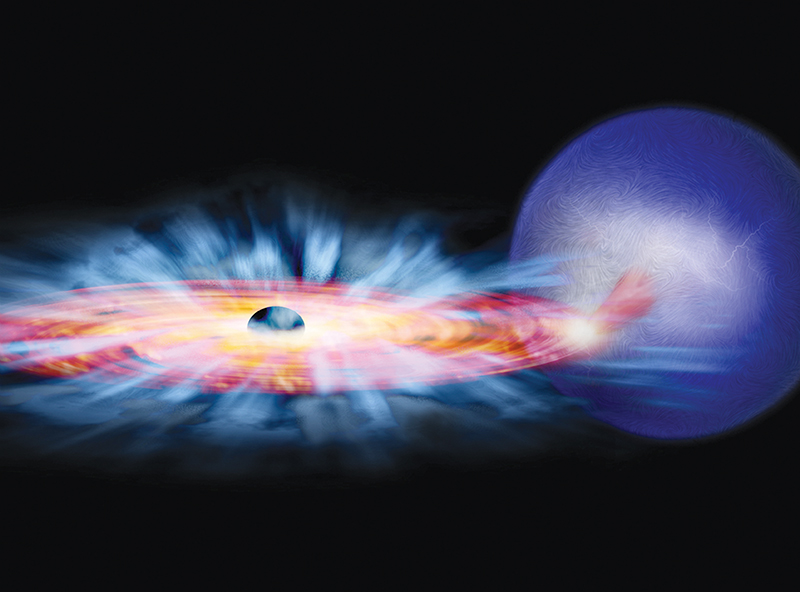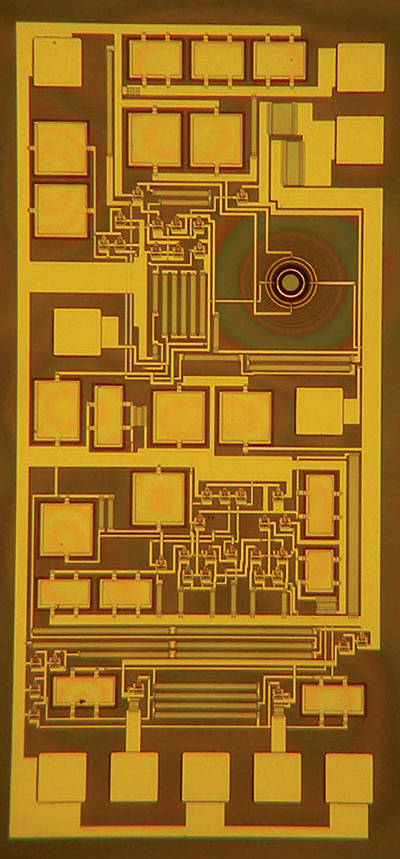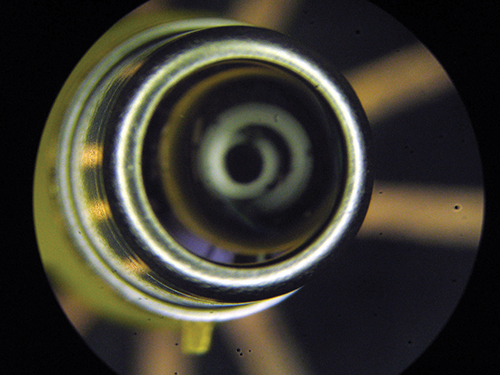
Ultra-Sensitive Photoreceiver Boosts Data Transmission
Originating Technology/NASA Contribution
In June 2006, NASA scientists used extensive data transmitted from the Chandra X-ray Observatory deep space telescope to prove that up to 25 percent of the light illuminating the universe comes from the “massive crush of matter succumbing to the extreme gravity of black holes.”
Six months later, in December, the Mars Exploration Rover, Opportunity, photographed patterns in the layering of crater-wall cliffs on Mars that are the clearest evidence of ancient sand dunes the robot has recorded since arriving on the Red Planet in 2004.
In helping to unravel mysteries such as these, NASA depends on advanced, ultra-sensitive photoreceivers and photodetectors to provide high-data rate communications and pinpoint image-detection and -recognition capabilities, respectively, from great distances spanning the universe. These particular parts are now being manufactured with more sensitivity than ever before, so NASA, in staying ahead of the curve, is seeking nothing but the best when it comes to choosing technologies that contribute to the success of its missions.
Partnership
In 2003, Epitaxial Technologies LLC was awarded a Small Business Innovation Research (SBIR) contract from Goddard Space Flight Center to help NASA address its need for advanced sensor components and systems for deep space and Mars missions. A Baltimore-based manufacturer and supplier of highly differentiated sensor components for the aerospace, defense, and telecommunications industries, Epitaxial Technologies had previously developed an ultra-sensitive photoreceiver for the U.S. Air Force and the U.S. Department of Defense’s Defense Advanced Research Projects Agency (DARPA). According to the company, this photoreceiver was based on the monolithic integration of photodiode detectors, optical amplifiers, and electronic amplifiers on a single chip; possessed a level of sensitivity higher than competing sensors; and could transmit an extremely high rate of data from extremely far distances.
For the NASA SBIR project, Epitaxial Technologies proposed developing an even better-performing version of this photoreciever, which the company already considered to be the best of its kind at the time. With support from Goddard, the company devised a technology that is more sensitive (capable of single photon sensitivity), smaller in size, lighter weight, and requires less power than its predecessor. The resulting technology is intended to boost data rate transmissions well into the terabit range for future space missions. In addition, it has the potential for use in NASA’s Earth-based missions for remote sensing of crops and other natural resources.
Product Outcome
Epitaxial Technologies’ new monolithic photoreceiver is making a statement on Earth with a wide range of commercial applications. It possesses the ability to operate in several wavelength ranges for fiber optic communications, law enforcement (radar), commercial laser range finding and imaging, and quantum encryption and computing. It also has applications for fluorescence and phosphorescence detection in chemical and biochemical assays.
For fiber optic communications, there is great potential for the ultra-sensitive photoreceiver to boost many military and civilian applications. Although components for high-speed transceivers are widely available, they can be either too expensive, or their bandwidth and distance capabilities can be inadequate, claims Epitaxial Technologies. In sharp contrast, the company says its photoreceiver helps reduce the cost of fiber optic systems and helps enable higher bandwidth and longer distance capabilities suitable for fiber optic networking, especially in metropolitan optical networks and long-haul communications.
There is also great potential for Epitaxial Technologies’ photoreceiver in military and civilian active laser imaging and free-space laser communication. These two applications focus on the transmission of laser energy through the atmosphere. During these transmissions, many problems related to signal reception and interference can occur, affecting functions such as laser pointing, tracking, and speckle (light patterns resulting from the reflection of coherent light at rough surfaces), as well as information processing. Typically, electronic amplification of the received optical signal is applied to alleviate these problems; however, this approach can create more noise. Epitaxial Technologies’ answer to this is to apply optical amplification techniques at the chip level to increase signal strength with minimum noise amplification and, thus, increase the transmission distance and overcome atmospheric attenuation.
Epitaxial Technologies is also in the business of developing other types of low-cost, ultra-sensitive detection components, so it is always seeking opportunities to further develop high-performance telecommunications and imaging applications. In 2006, the company was again selected to participate in the NASA SBIR program with Goddard. This time, the company is developing monolithic, time-delay photodiode arrays for NASA satellite tracking and vehicle docking, with the intent to spin off another technology with terrestrial benefits.

A NASA-funded research project helped Epitaxial Technologies LLC to commercialize its avalanche photodiode and photon counting sensor technologies. Pictured here is a receiver chip.

Top end of a lens for a detector/receiver package.

Black holes grow by drawing gas from nearby objects such as stars into an accretion disk, a structure formed when material (usually gas) is being transferred from one celestial object to another.













